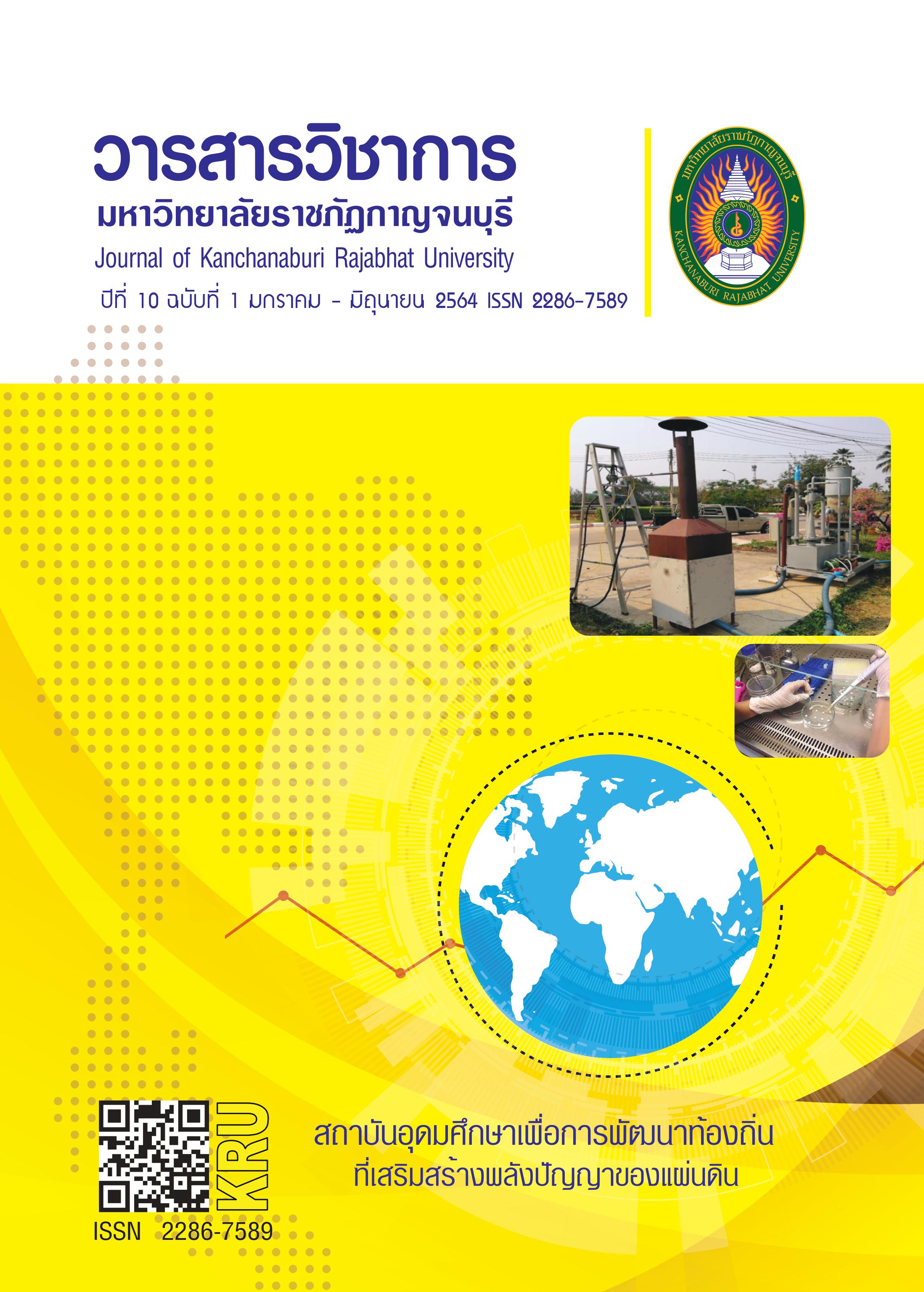THE ORGANIZATIONAL MANAGEMENT MODEL TOWARDS THE EXCELLENCE FOR THE EXPORT SPORTSWEAR MANUFACTURER
Main Article Content
Abstract
The purposes of this study were: 1) to study the organizational assessment factors affecting the success of an organization of an export sportswear manufacturer, 2) to study the indicators on development towards the high performance organization of an export sportswear manufacturer, 3) to compare the indicators on development towards the high performance organization of an export sportswear manufacturer classified by personal information, and 4) to find the relationship between the organizational assessment factors affecting the success of an organization and the indicators on development towards a high performance organization. The population in the study comprised employees of an export sportswear manufacturer. Mixed methods were used to collect quantitative data from a sample of 116 people. The statistical tools included t-test, One-Way ANOVA, Correlation and Multiple Regression Analysis. The data were collected and analyzed using percentage and mean together with qualitative research data from interviews of 16 samples.
The results showed that 1) the organizational assessment factors affecting the success of the seven elements according to the McKinsey 7S Model were important for the development of excellence for the export sportswear manufacturer at a very high level of importance; 2) the indicators on the development towards a high performance organization in all 8 areas were of great importance to the excellence of the export sportswear manufacturer; 3) it was found that difference in the average monthly income affected the opinions towards organizational development indicators on development towards a high performance organization whereas personal information regarding gender, age, job position, education level, marital status and working age did not affect the opinions on the indicators on development towards a high performance organization; and 4) the organizational assessment factors affecting the success correlated with the indicators on development towards a high performance organization in all areas, with shared values at a very high level of correlation in the same direction and the remaining six elements at a high level of correlation in the same direction, and the organizational assessment factors in the organizational structure, skills and shared values influenced the indicators on development towards a high performance organization at the statistically significant level of .05.
Article Details
References
กรรณิการ์ สิทธิชัย และ สันติธร ภูริภักดี. (2561). การจัดการองค์กรตามแนวคิด 7s ของ McKinsey ที่เอื้อต่อการ
เป็นองค์กรนวัตกรรม มหาวิทยาลัยศิลปากร, วารสารวิชาการ Veridian E-Journal, 11(3), 1419.
ปัณฑารีย์ ฟองแพร. (2559). ปัจจัยที่มีผลต่อการพัฒนาองค์กรให้มีศักยภาพการทำงานสูง : กรณีศึกษาธนาคารยูโอบี.
มหาวิทยาลัยบูรพา. Burapha University Library. http://webopac.lib.buu.ac.th.
สมาน อัศวภูมิ (2559). ความเป็นเลิศและการจัดการความเลิศ. วารสารบริหารการศึกษาบัวบัณฑิต
มหาวิทยาลัยราชภัฏอุบลราชธานี, 16(1), 4-5.
Andre A. de Waal. (2007). The Characteristics of a High Performance Organization. Published in
Business Strategy Series, volume 8, number 3, 2007 (Emerald). p.179-185.
Andre A. de Waal & Chiraprapha Tan Akaraborworn. (2014). Adapting the high performance
organization framework to the Thai context. Published in MEASURING BUSINESS
EXCELLENCE VOL.18 NO.2. p.28-38. © Emerald Group Publishing Limited
ISSN 1368-3047.
Carew, Kandarian, Parisi-Carew & Stoner. (2009). The HPO SCORES™ Model. Leading at a Higher
Level, Revised and Expanded Edition: Leadership and Creating High Performing
Organizations, 2nd Edition by Ken Blanchard. p.10-11. Published Sep 8, 2009
by Pearson Prentice Hall.
Frank Buytendijk. (2006). The Five Keys to Building a High-Performance Organization, Business
Performance Management Magazine 4(1). p.24-29.
J. B. Tracey Ph.D., Cornell University & Brendan Blood. (2012). The Ithaca Beer Company : A case
study of the application of the McKinsey 7-S framework. Cornell Hospitality Report,
(7). p.6-13.
John Dudovskiy. (2017). Starbucks McKinsey 7S Model. Reported in Starbucks Corporation
Report by Research Methodology. https://research-methodology.net. Posted on April
, 2017.
Lawrence M. Miller. (2001). The High-Performance Organization - An Assessment of Virtues and
Values. The European BAHÁ’Í Business Forum - Organizational effectiveness. p.1-2.
Ovidijus Jurevicius. (2013). McKinsey 7s Model. Strategic Management Insight December 20,
Peters, Thomas J., & R.H. Waterman. (1982). In Search of Excellence: Lessons from America’s Best
Run Companies. New York: Harper & Row. Ref .https://www.businessballs.com.
Robert H. Waterman, Jr., Thomas J. Peters & Julien R. Phillips (1980), Structure Is Not Organization:
S Framework. The Journal of the Kelley School of Business, Indiana University. p.14-26.
T. Hussain & M. Khalid (2010). Factors That Lead Organizations to Achieve Business Excellence,
Journal of Quality and Technology Management, Volume VI, Issue 1, June 2010.
p.39-55.
Vivienne Jupp & Mark P.Younger. (2004). A Value Model for the Public Sector. Outlook Journal
February 2014. p.19-21.


